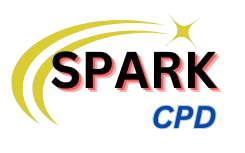


Duration: 5 Hours
Date: November 16, 2025
Time: 10:00 AM - 03:00 PM (UK TIME)
Location: Zoom Webinar
Speaker: Dr Ramesh Vellingiri BDS, MS (Oral Biology and Pathology), GDC Registered Dental care professional & Dr Sabitha Gokulraj BDS, MDS (Oral Medicine & Radiology)
Limited Early Bird Offer:
Get this comprehensive webinar for just
£24.99 £9.99 if you book early!
Seats at this price are limited, and once they’re gone, the cost will rise to
£24.99.
The reading materials for this course are prepared from GDC-recommended books for ORE exams, ensuring the course complies with GDC requirements.
This course aims to:
By the end of this course, participants will be able to:
On successful completion of this course, learners will be able to:
Radiation Effects, Osteoradionecrosis, Scottish Guidelines for MRONJ, X-Ray Production
"Thank you so much for such a high-yield webinar. Kindly keep me updated on all future classes."
"The webinar on Oral Radiology was incredibly insightful!"
Fundamentals of Radiographic interpretation, Normal Radiographic anatomy of maxilla and mandible, Radiographic errors
"Thank you for the response. If you’re conducting this lecture again, will we be informed? I would like you to attend once more. As it is one of the most detailed lectures I’ve attended so far"
"Thanks Ramesh for organising, was quite informative, she started from basics which gave us a better insight"
"Thank you so much for this insightful webinar! The comparison between dry skulls and clinical radiographic pictures was incredibly helpful, making it easy to visualize and understand the concepts presented in the slides. I really appreciated the clarity and effectiveness of your presentation!"
"Thanks a lot it’s very informative and detailed"
"Good recap on anatomy but would have been better to discuss some related pathologies alongside."
Radiographic interpretation of Dental caries and Peridontal Disease
"Well-structured and interactive. Thank you, Spark CPD!"
"I appreciated how the instructor broke down complex topics into digestible modules. Highly recommend this to anyone needing a refresher in oral radiology."
Clinical Radiography in Dentistry: A Comprehensive Guide to Periapical Inflammation, Osteonecrosis, Osteomyelitis, FGDP Criteria of Dental Caries and Periodontal Disease, and Normal Anatomic Landmarks of OPG and its Interpretation
"I really enjoyed this course! It gave me a much clearer understanding and the explanations on periapical inflammation and osteomyelitis were detailed yet easy to follow."
"Overall, it’s a well-structured course and perfect for anyone in dentistry who wants to strengthen their radiographic interpretation skills. Highly recommended!"
Normal Radiographic Anatomy of Maxilla and Mandible, Radiographic Interpretation of Dental Caries and Periodontal Disease
"Thank you for the brilliant presentation"
"Too much info to process, a break in between would be great - I feel it should be a bit slower. However very informative!"
Local and Regional Anesthesia in Dentistry & Diagnosis and Treatment Planning in Dentistry
"Thank you for the course. I understand it is a huge topic so only wished it was a bit longer, otherwise very clear and informative course."
"Thank you so much for the informative presantation"
Previous LA session was more of simple ...pictures were not clear but your one is more clinically oriented so more fun with your session